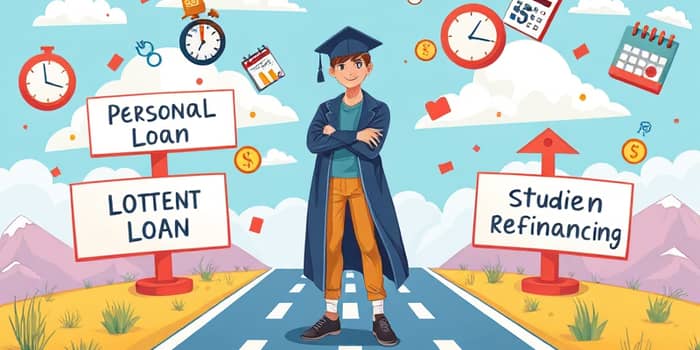
Deciding how to manage the burden of student debt can feel overwhelming. You may have heard about both student loan refinancing and personal loans as potential solutions, but which option truly serves your best interests?
This guide dives deep into the mechanics, benefits, risks, and decision factors so you can confidently choose a path that aligns with your financial future.
Student loan refinancing replaces your existing loans—federal or private—with a new loan from a private lender. The goal is typically to secure a lower interest rate or more flexible term.
Current refinancing rates generally range from 3.99% to 12.05% APR, depending on creditworthiness and term length.
When done wisely, refinancing offers compelling benefits:
For borrowers with private loans at high APRs or excellent credit profiles, refinancing can be a game changer.
Not all borrowers will benefit equally. Before refinancing, consider these trade-offs:
If you refinance federal loans, you lose critical federal loan protections. Income-driven repayment, deferment, forbearance, and forgiveness programs become inaccessible.
Extending your repayment term lowers monthly payments but can lead to higher total interest costs over time. Additionally, you’ll need a credit score of 670 or above, a debt-to-income ratio below 40–50%, and steady employment to qualify for top offers.
Some borrowers consider a personal loan to tackle student debt, but this strategy usually backfires:
In short, personal loans rarely match the advantages of dedicated student loan refinancing.
The table below highlights the critical differences to help you decide:
Refinancing could be your best move if you:
Federal loan borrowers must weigh the permanent loss of government benefits very carefully before proceeding.
Equip yourself with the following strategies:
By consolidating research and understanding the full impact of each choice, you’ll be prepared to select the option that aligns with your financial goals.
For most borrowers looking to maximize savings and maintain flexibility, dedicated student loan refinancing from a private lender offers the ideal balance of rate reduction, term options, and borrower benefits.
Personal loans for student debt generally carry higher costs and fewer safeguards, making them a less favorable route. Armed with a clear comparison and actionable tips, you can now make a decision that supports your path to financial wellness.
References













